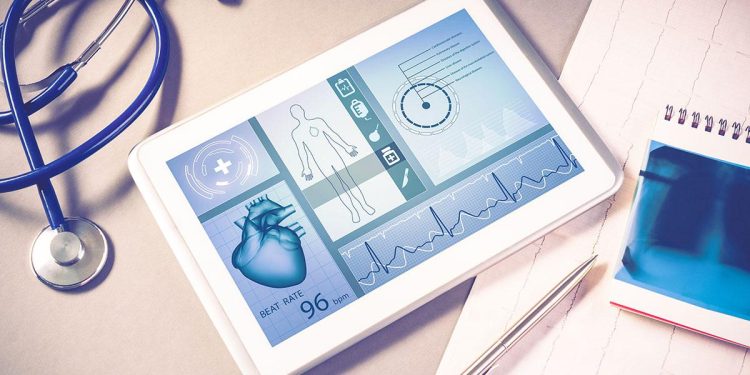The healthcare industry has long struggled with issues related to data sharing, interoperability, and privacy protection. Medical data is highly sensitive, and ensuring both secure sharing and patient confidentiality is a significant challenge. Traditional centralized systems in healthcare often lead to inefficiencies, data breaches, and lack of access to critical health information when it is needed most. Blockchain technology, with its decentralized, transparent, and secure nature, presents a game-changing solution that can revolutionize healthcare data management. It offers a way to meet the dual objectives of data sharing and privacy protection, allowing healthcare systems to overcome long-standing challenges.
This article explores how blockchain technology can enable efficient, secure data sharing and achieve the high standard of privacy protection required in the healthcare industry.
1. Understanding Blockchain’s Role in Healthcare
Blockchain is essentially a decentralized, distributed ledger technology that enables multiple participants to maintain a secure and transparent record of transactions. Its key attributes, such as immutability, decentralization, transparency, and cryptography, make it ideal for applications where data security and privacy are paramount.
In the healthcare industry, blockchain can be applied to create secure digital records of patient health data, streamline information exchange between healthcare providers, and facilitate real-time access to medical histories, all while maintaining the confidentiality of sensitive personal health information.
2. Blockchain’s Core Features for Healthcare Data Management
A. Decentralization
Traditional healthcare systems often rely on centralized databases, where a single organization or entity controls access to medical records. This centralized model can create vulnerabilities, such as data breaches, unauthorized access, or single points of failure.
Blockchain’s decentralization eliminates the need for a central authority, distributing the responsibility of maintaining and verifying data across multiple nodes (computers) in the network. This provides a more secure infrastructure for managing healthcare records.
Benefits of Decentralization in Healthcare:
- Reduced Data Breaches: Since data is distributed across a network of nodes, the likelihood of a single point of failure is significantly reduced.
- Increased Resilience: Blockchain’s distributed nature makes the system more resilient against attacks or technical failures. If one node is compromised, the rest of the network remains unaffected.
- Increased Trust: Patients and healthcare providers can trust that their data is being securely managed and that access is transparent and immutable.
B. Immutability and Auditability
One of blockchain’s most powerful features is its immutability. Once a transaction (or data entry) is recorded on the blockchain, it cannot be changed or deleted. This property makes blockchain an excellent solution for ensuring data integrity in healthcare.
How Immutability Benefits Healthcare:
- Protection Against Fraud: In healthcare, fraudulent activity, such as altering patient records, can have serious consequences. Blockchain ensures that once medical data is recorded, it cannot be tampered with, providing an immutable audit trail.
- Verification of Data Accuracy: Healthcare providers can verify the authenticity of patient data at any point in time, ensuring that medical histories are accurate and complete.
- Auditability: Blockchain records every transaction, creating a full audit trail of who accessed the data, when, and why. This can be particularly useful in preventing fraud or unauthorized data manipulation.
C. Cryptographic Security
Blockchain employs public-key cryptography to ensure that only authorized parties can access or modify data. Each participant in a blockchain network has a unique private key and a corresponding public key, allowing them to send and receive data securely.
How Cryptography Ensures Privacy:
- Encryption: Sensitive health data is encrypted and can only be decrypted by individuals who have the appropriate private key. This ensures that patient information remains confidential.
- Control Over Access: Blockchain enables fine-grained control over who can access patient data. Patients can give explicit consent for healthcare providers, insurers, or researchers to access their records, ensuring that they maintain control over their own data.
- Secure Communication: Blockchain’s encryption mechanisms also enable secure, tamper-proof communication between healthcare providers, ensuring that the data exchanged is protected from cyber threats.
3. Blockchain for Data Sharing in Healthcare
A. Interoperability and Data Exchange
One of the biggest challenges in the healthcare sector is the lack of interoperability between different healthcare systems. Patient records are often siloed in proprietary systems, making it difficult for different healthcare providers to share data efficiently. This can lead to delayed diagnoses, ineffective treatments, and medical errors.
Blockchain can serve as a decentralized hub for interoperable data exchange. By storing patient records on the blockchain, healthcare providers across different organizations and geographies can access and share medical data securely and in real-time.
How Blockchain Enables Seamless Data Sharing:
- Real-time Access: Blockchain allows healthcare providers to access up-to-date patient data in real-time, which can improve decision-making and treatment outcomes.
- Standardized Data Formats: Blockchain can work with smart contracts to automate the exchange of information and ensure that all data adheres to agreed-upon standards, such as HL7 (Health Level 7) or FHIR (Fast Healthcare Interoperability Resources), which are commonly used in healthcare data exchange.
- Cross-Border Data Sharing: Blockchain enables global interoperability by removing geographical and regulatory barriers. It allows healthcare systems in different countries to exchange patient records, improving the continuity of care for patients traveling or relocating internationally.
Example:
- MedRec, a blockchain-based platform developed by MIT, uses blockchain to create a system for sharing electronic health records (EHRs) securely across different hospitals and clinics. This platform provides real-time access to patient data while maintaining security and privacy.
B. Patient Control Over Data
Traditionally, healthcare data is controlled by centralized organizations (e.g., hospitals, insurance companies). Blockchain technology shifts the balance of control to patients themselves, enabling them to own and control their own health data. With blockchain, patients can grant or revoke access to their medical records, providing better control and autonomy over their healthcare information.
How Blockchain Empowers Patients:
- Patient Consent: Blockchain can store patients’ consent information, allowing them to decide who can access their records and under what circumstances. This empowers patients to manage their healthcare data and ensures that it is shared only with trusted parties.
- Transparency and Visibility: Blockchain provides full visibility into who has accessed a patient’s data and what actions were taken. This transparency fosters trust and allows patients to ensure that their data is being used appropriately.
Example:
- Healthereum is a blockchain-based platform that allows patients to control and share their health data while earning rewards for engagement and adherence to treatment plans.

4. Privacy Protection in Blockchain-Based Healthcare Systems
A. Permissioned vs. Permissionless Blockchains
When implementing blockchain in healthcare, one critical decision is whether to use a permissioned or permissionless blockchain.
- Permissionless Blockchain (e.g., Bitcoin) is open to everyone, and anyone can participate in the network. While this provides transparency, it may not be suitable for storing sensitive health data due to privacy concerns.
- Permissioned Blockchain allows only authorized participants to access the network, making it ideal for healthcare applications. With a permissioned blockchain, healthcare providers, patients, and regulatory bodies can be granted access according to pre-defined rules, ensuring data privacy and security.
Benefits of Permissioned Blockchain in Healthcare:
- Controlled Access: Only authorized users (such as healthcare professionals or patients themselves) can access specific patient data.
- Compliance with Regulations: Permissioned blockchains can be configured to comply with regulations such as HIPAA (Health Insurance Portability and Accountability Act) in the U.S. or GDPR (General Data Protection Regulation) in Europe, ensuring that patient data privacy is maintained.
- Granular Permissions: Smart contracts on permissioned blockchains can define who has access to specific types of data (e.g., lab results, prescriptions, or treatment history), ensuring that only relevant healthcare professionals are involved in patient care.
B. Zero-Knowledge Proofs (ZKPs)
Zero-Knowledge Proofs (ZKPs) are cryptographic methods that allow a party to prove to another party that they know a piece of information (e.g., patient data) without revealing the actual information itself. ZKPs can be implemented in blockchain networks to enable healthcare data sharing while ensuring privacy.
How ZKPs Protect Privacy:
- Proof Without Exposure: Healthcare providers can verify a patient’s medical history or credentials (e.g., age, medical conditions, vaccination status) without revealing the underlying sensitive data.
- Minimized Data Exposure: ZKPs help in minimizing data exposure while still allowing for verification, thus protecting patient privacy while enabling essential healthcare interactions.
Example:
- A ZKP could allow a healthcare provider to verify that a patient is eligible for a specific treatment based on their medical records without revealing their entire medical history to the provider.
5. The Future of Blockchain in Healthcare
Blockchain technology’s role in healthcare is still in its early stages, but its potential to transform the industry is enormous. As blockchain adoption continues to grow, healthcare providers, insurers, and technology companies will need to collaborate to ensure seamless interoperability, regulatory compliance, and data privacy.
The following trends are likely to shape the future of blockchain in healthcare:
- Wider Adoption of Decentralized Health Records**: Blockchain will increasingly be used to create patient-centered health records that patients can control and share as needed.
- Interoperability and Data Standardization: Blockchain will enable different healthcare systems to interoperate more effectively, creating standardized solutions for health data exchange.
- Integration with Other Technologies: Blockchain will be integrated with other emerging technologies like AI and IoT to create more advanced healthcare systems that leverage data-driven decision-making, real-time monitoring, and predictive analytics.
Conclusion
Blockchain technology offers a powerful solution to the healthcare industry’s most pressing challenges related to data sharing and privacy protection. Through its decentralized ledger, immutable record-keeping, cryptographic security, and patient control over data, blockchain is poised to revolutionize how healthcare systems manage sensitive patient information. By enabling secure and transparent data sharing, blockchain can enhance collaboration among healthcare providers, improve patient outcomes, and drive efficiencies.
As the healthcare industry continues to explore the full potential of blockchain, we are likely to see more widespread adoption of blockchain-based health data systems that balance the need for secure data sharing with the paramount importance of protecting patient privacy.
















































